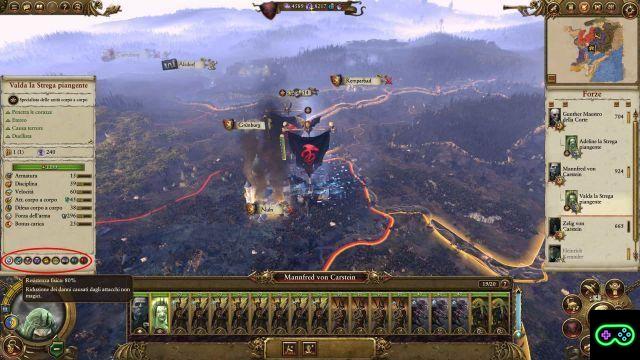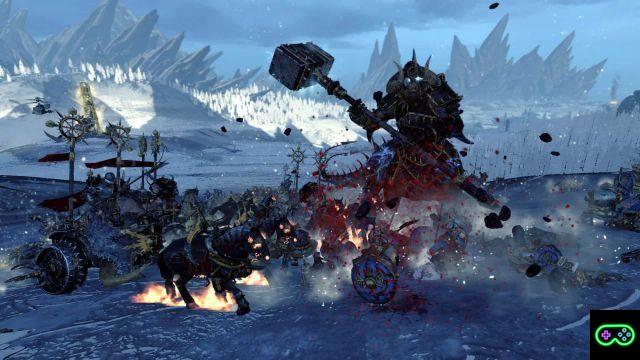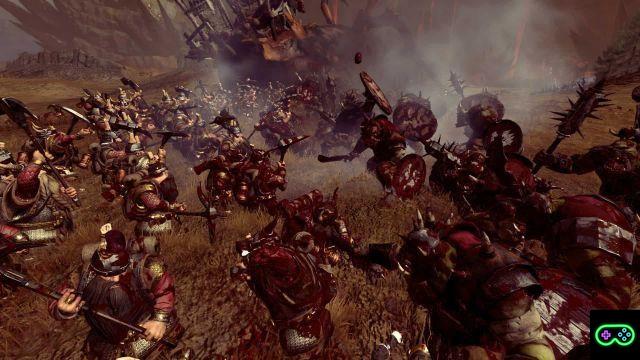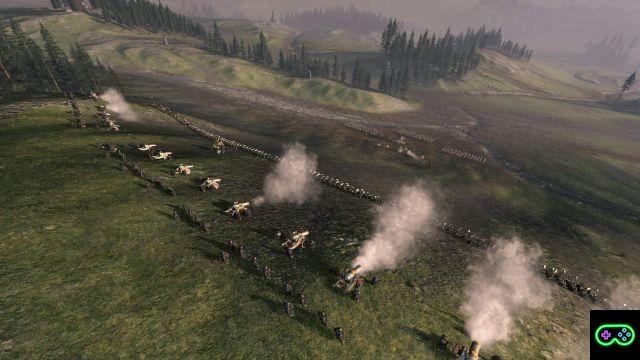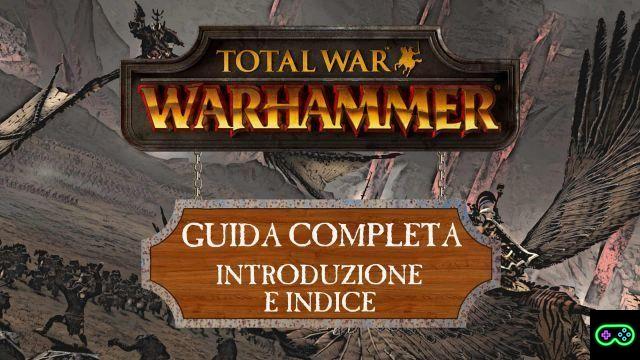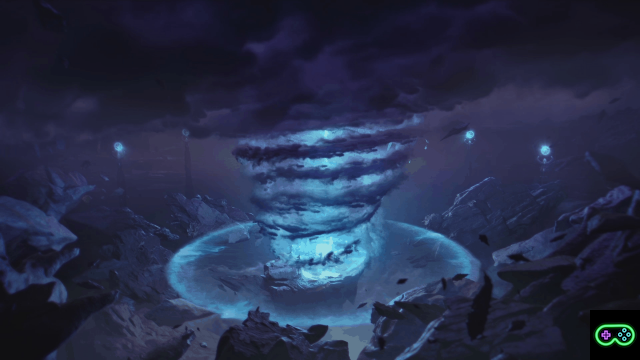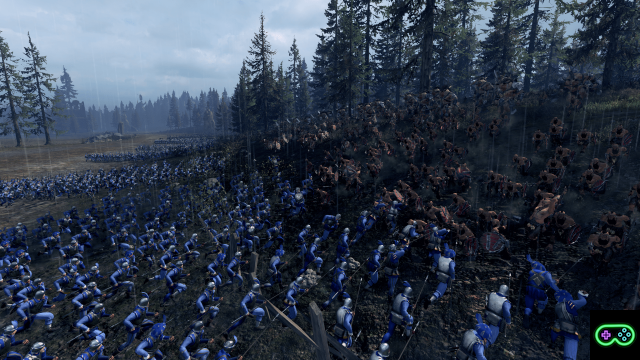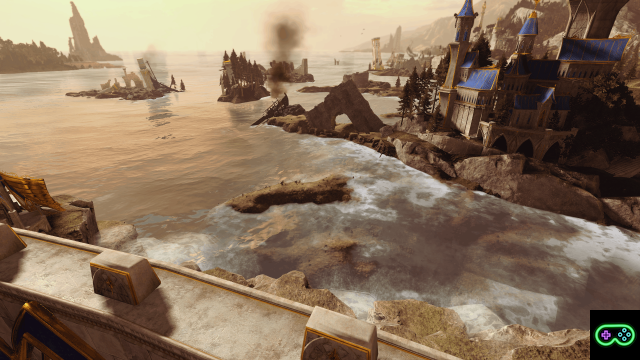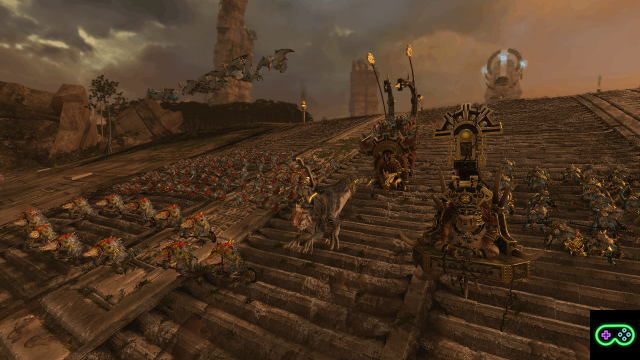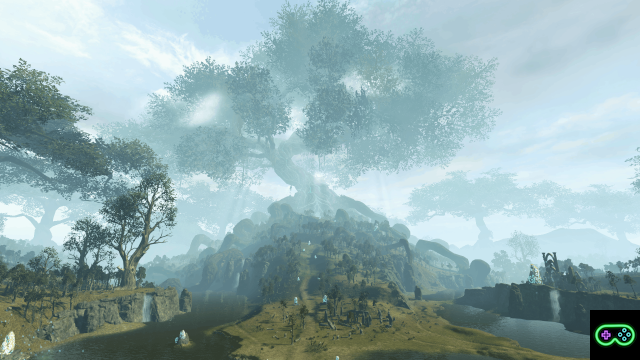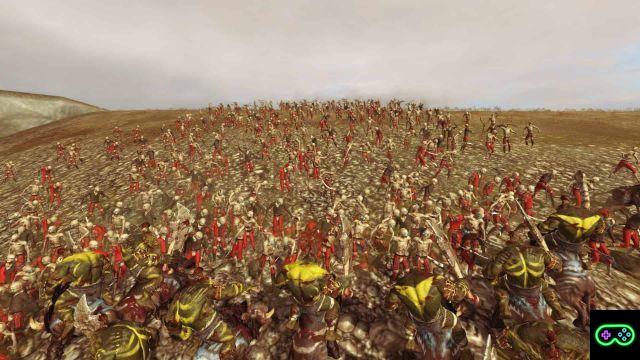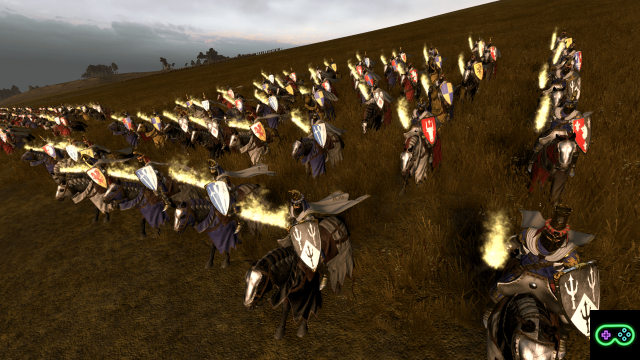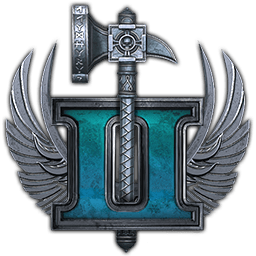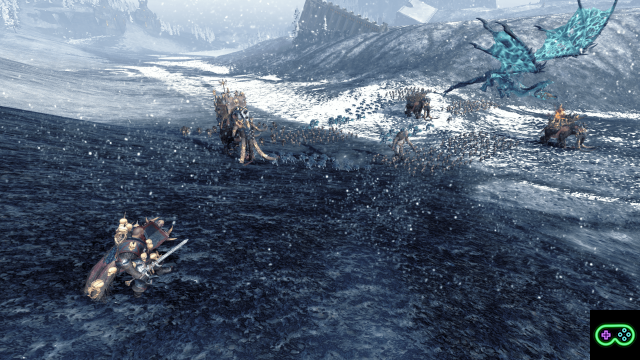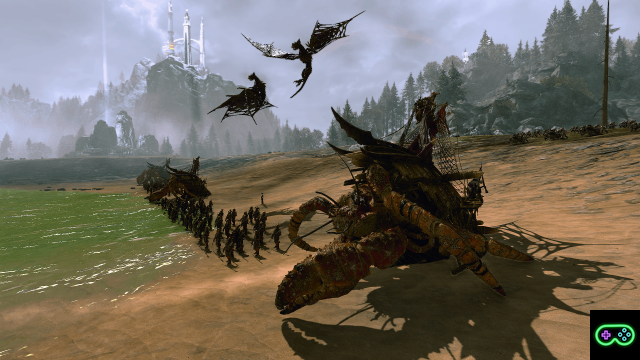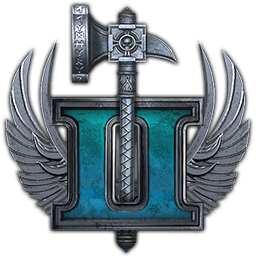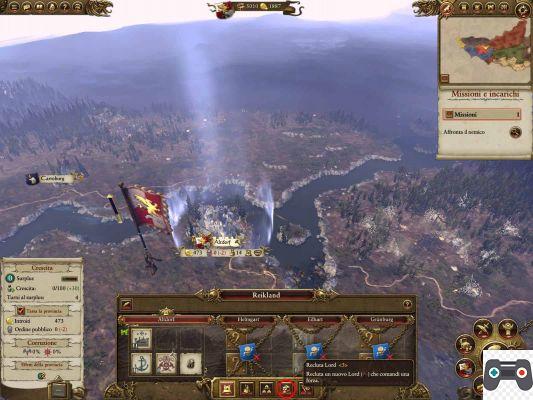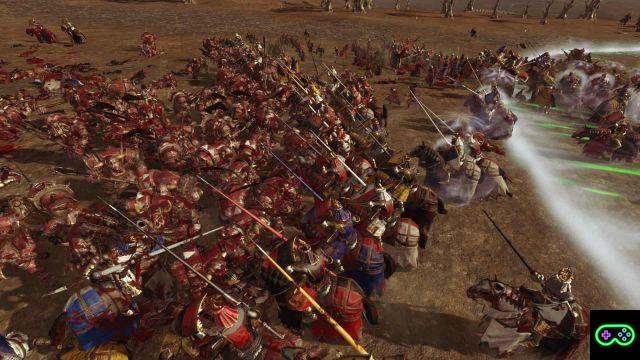- Click here to read the other pages of the guide -
Skaven
The underground empire of the Skaven, made up of millions of intelligent ratmen just over five feet tall, branches out from the depths of the Old World in every direction, often beneath the cities of other races.
From their capital, Skarogna, located beneath the swamp between Estalia and Tilea, the Council of Thirteen representatives of the most important Skaven clans carry out their terrible machinations.
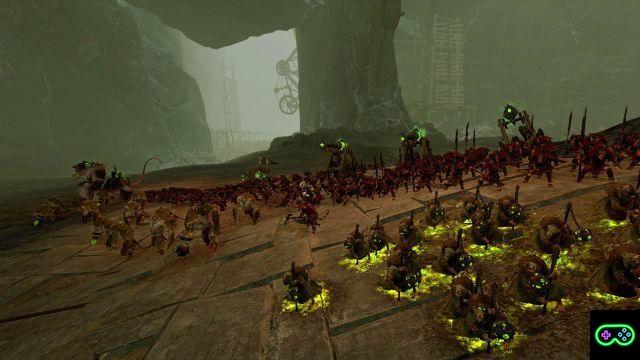
The Skaven armies count on quantity rather than quality, with an infantry made up of very numerous but poorly performing units, supporting some valuable units and any technological devilry produced by the most unhealthy mouse minds.
Strategy in the Campaign
Characteristic traits of the faction:
- Skaven Underworld Empire:
The Skaven live underground, only coming out to procure resources or attack their enemies from behind.
Each settlement belonging to a Skaven faction will appear, in the eyes of the other factions, as a ruin without a master. The presence of the city itself will only reveal itself after an exploration by a hero or an attempted colonization by a lord. In the latter case, the pre-battle panel with the engagement options will open immediately, as if you had given orders to attack a normal settlement of another faction. If you decide to attack, a state of war will be declared between the two factions (if this does not already exist); in the event of a retreat, war will not be declared.
- Food:
The over-populated rat-man society requires immense amounts of food, often insufficient to feed the lower ranks, left to starve or cannibalize.
Each Skaven faction is equipped with a food counter, a resource necessary for the faction's sustenance. Each settlement and each army will participate in the consumption of food, which will be deducted from the meter at the beginning of each turn. Food is mostly obtained through military victories, after which it is credited. From the same victory, additional food can be obtained through one of the options in the post-battle panel.
Some buildings, including village building chains containing the pasture resource, are capable of producing a certain amount of food each turn.
The food cap represents the faction's overall demand, and is proportional to the number of settlements under your control.
Having an amount of food as close to the maximum limit as possible will result in a number of important bonuses, while a famine will severely hamper your campaign.

- Corruption of the Skaven:
Like any pernicious faction, the Skaven also corrupt all the territories in which they stop by their mere presence.
Several Skaven buildings and characters with certain abilities can spread Skaven corruption (other than Chaos and Vampire corruption) in their own or adjacent territories.
This corruption, unlike the others, will have negative effects even on the Skaven factions that spread it, gradually lowering public order. High corruption, on the other hand, may allow for multiple uses of the army skill The Underground Threat.
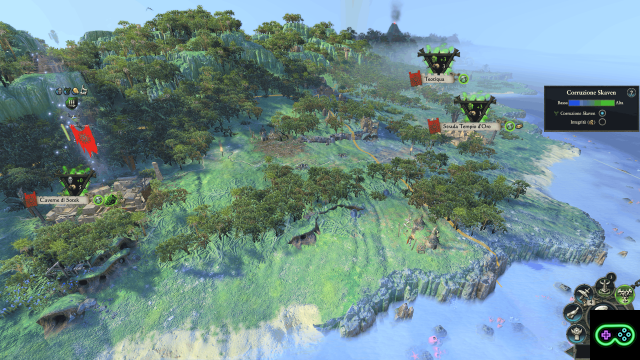
- The underground threat:
Each ratman army that fights in a region where there is Skaven corruption gains the Underworld Menace ability, the effect of which is to create a unit of clan rats anywhere on the map, without consuming magic. This ability opens the door to the most varied strategies, from a quick encirclement to neutralizing the enemy artillery by engaging them in a sudden melee, up to the conquest of settlements by making Skaven appear directly above the control point during a siege battle. - Strong in numbers, cowardly in defeat
Skaven are worth nothing individually, and only hold ranks if supported by a large number of companions. Their discipline is affected by a very strong survival instinct, which gives them great strength when the alternative is defeat.
Almost all units receive combat bonuses as long as their health is above 50%, and while fleeing, they increase their speed to be able to get out of harm's way quickly.
Army Mode:
- Hunting: The standard Skaven army mode offers as a bonus a chance that your attacks in this mode will start as ambushes instead of normal pitched battles. This effect does not apply when attacking a walled settlement but also applies to sortie battles.
- Marching
- Ambush
- Assault
- Camp
- Underground way
Recruitment Mode:
- Local
- Global (when in a Settlement or Camp Mode)
- Blessed progenitures
Settlement conquest mode:
- Occupies
- Raid
- Raze to the ground
Initial game phase
In the initial phase of the campaign, the Skaven are the most disadvantaged race, due to the extreme lightness of the troops at its disposal and the discipline that is anything but reliable. It is necessary to bet everything on a strongly aggressive strategy focused on ambushes and raids, avoiding the head-on clash with enemy armies or siege battles, in a very similar way to what happens in the early game phases of a Beastmen faction.
If your opponent starts playing cat and mouse chasing you with their armies, they will inevitably leave their settlements uncovered and defenseless by your horde of low tier warriors. Don't focus on territorial control, and invest in principle only for buildings that will strengthen your army.
In this first phase of the game, the goal will be to balance the initial strength imbalance by improving units and lords, even at the cost of making you conquer the innermost territories several times. It is not recommended to leave the lead army in defense of a settlement or to spend food on leveling up a border settlement.
Development
After bringing the smaller factions close to your capital to their knees, you will have buffer provinces at your disposal that will ensure greater stability in the capital. Invest resources now in the military chain to give your army the shape you want. The units of greatest interest will undoubtedly be the assault rats (with sword and spear), the monks of the plague and the deadly catapults. The rats of the clan must be abandoned as soon as possible, unless of extreme necessity, since the lack of discipline does not make them even as good as cannon fodder.
In this middle phase, in which each emerging faction will have absorbed its neighbors, you will have to carefully choose your enemies, and annihilate them in a total and ruthless way, in perfect Skaven style. Don't get drawn into position wars, and always gnaw resources from the most vulnerable settlements. If you have more than one army, send a smaller one to settle the opposing border cities, in order to lure the enemy troops out of tempting points of interest (be they cities with rich looting or cities important for the enemy's military buildings).
Confront enemy capitals and their main armies only via ambushes or in massive numerical superiority.
Final phase
In the final phase of the campaign it is advisable to maintain an elusive and persecutory strategy, since armies of maximum enemy tier can often be difficult or reduce you to a state of excessive vulnerability before you can restore your contingent to the maximum.
The Skaven fortified cities themselves do not offer a very reliable defense, and will need to be guarded with caution throughout the campaign.
Do not seek unbridled territorial expansion, it is not necessary in order to win. If you are in tight territorial control, you could invest some of the troops not engaged in border defense in invasions of enemy territories to plunder enemy cities and prevent your opponents from conducting a coordinated attack against you.
Battle Tactics
Strengths:
- Inexpensive and very large infantry
- Different infantry unit options
- Varied, efficient and lethal artillery, both against infantry and single opponents
- Good knowledge of magic, destructive both to area and against single targets
Weaknesses:
- Overall weak and underperforming units
- Monstrous units that are fragile and inferior to their opposing counterparts
- Low discipline
- No flying or cavalry options
Use the Skaven
The Skaven represent a ravenous horde of evil creatures, and as such they rely on a seemingly self-destructive approach to the battlefield.
Each Skaven army must be equipped with a limited circle of units on which to rely to overwhelm the opposing forces, assisted by lower quality units used to bog down the enemy line by engaging them from all sides.
In general, you can count on artillery to begin to thin out the enemy's valuable units and lower their morale, so as to enter the melee phase in the most favorable way possible. The infantry alone, even if armored, gives way against the counterparts of the other factions, and is not decisive by itself. Its purpose is therefore to give the monsters and single characters time to use all their devastating abilities, and to give the final blow to units exhausted by cannon fire or magical attacks.
In almost all battles, you will be able to use the ability The Underground Threat to engage enemy missile infantry or artillery, or to let your own clan rats be encircled and destroyed in order to have the targets of the your catapults.
Confronting the Rat Men
The Skaven represent the most common enemy of all, due to the enemy armies that will appear during the rituals.
The best way to deal with an army of Rat Men is not to be outnumbered and not to be attacked, in order not to risk being ambushed. More than once you may have to make the difficult choice of sending a lord with the Lightning Attack ability on a suicide mission, which denies reinforcements access to battle, thus facing the Skaven lords one at a time and in pitched battle. . This strategy allows you to inflict more damage than a pair of Skaven armies could if they penetrated your inner provinces unchallenged.
On the battlefield, the followers of the Horned Rat, having no flying or cavalry troops, are static and predictable, although they are equipped with much faster than average infantry. If your light units manage to neutralize the murine artillery and you have some pikemen to counter the monsters, the heavy infantry will have time to put the ratmen to flight and victory will be yours.
Best Units
- Assault Rats
Dark-haired and fairly armored Skaven represent the elite of the heavy infantry. They are available with both sword and shield and halberd, but sadly have little discipline and poor combat skills. If properly commanded, they can do something good before they run away.
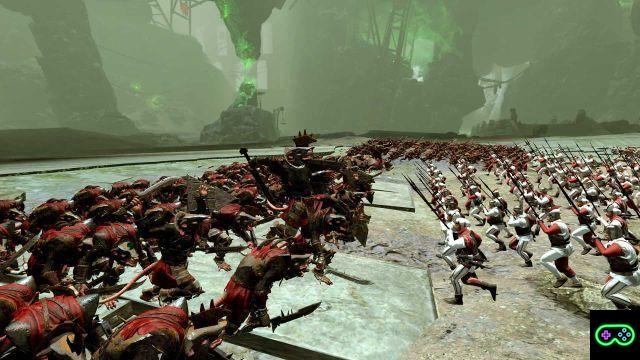
- Plague monks
Plague monks are the most devoted servants of the Great Horned Rat, the pernicious deity worshiped by the Skaven. He gives them his own dark blessings so that they spread corruption throughout the world.
Monks, in their different versions, represent the first unlockable Skaven infantry that is truly capable of inflicting some damage on opposing troops. Unfortunately, they are also very fragile, without armor, and only count on a limited reduction in physical damage.
It is recommended to keep them away from arrows and enemy cavalry.
- Cannone Warp
The warp cannon has a more than decent range and is very accurate. Add to this the bonus against large units that it is equipped with, you get a lethal weapon against enemy monsters, even flying ones, and against the lords who might ride them. A trump card in every battle.
- Death Globe Bombers
Among Skaven infantry missile units, a maximum tier army may want to choose bombers for some defense applications - they have good wall shooting - or to make close fire in ambushes or pitched battles against specific targets (wizards, heroes or armored units to be weakened). These skaven, compared to the other options, have a shot not in the area but very dense, and therefore very effective.
- Wheel of Fate
The wheel of fate is a lightning-fast mobile war machine that has no counterpart in other factions. It is a cross between a shooting chariot and an armored charge unit, and partly obviates the lack of cavalry. It is not as solid as an Imperial tank, but is faster and more disruptive in encircling slow and light units.
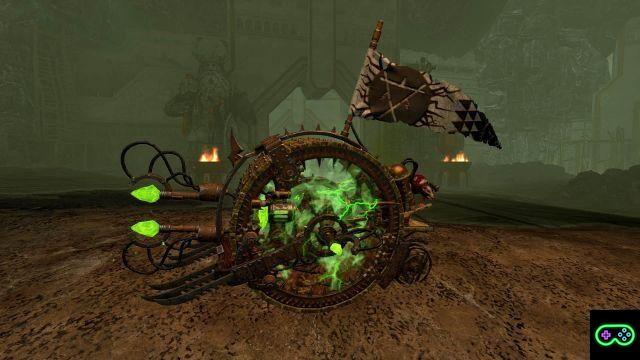
- Sorcerer Engineer and Plague Priest
Two heroes on the Skaven roster, diametrically opposed but both necessary for the coordination of the battle.
While the Engineer Sorcerer is endowed with abilities that increase artillery effectiveness and tear through enemy ranks, the Priest inflicts curses and empowers allied troops so that they match enemy troops in value and fight equally.
Together, they can bring about the success of an apparently unfavorable battle. It is wise to have this pair in any army.
Continue reading with the next article Focus 5: Tomb King
Go to previous article Focus 3: Lizardmen




